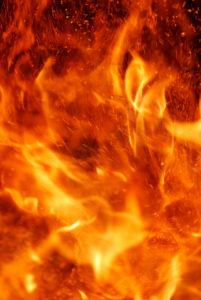
Scientists tell us the earth is made of four basic layers: the outer crust, which is relatively thin; the mantle, a solid layer nearly 1800 miles thick; and a core with an outer liquid layer surrounding a solid center.
But according to some religious teachings, the interior regions of the earth belong to the realm of the supernatural and are therefore inaccessible to mortals. They picture that deep subterranean world as the place of punishment for the unrighteous dead – a burning inferno in which deserving sinners are tormented eternally.
Before we add these contrasting views of the earth to the list of supposedly irreconcilable differences between science and religion, let’s consider what the Bible really teaches about hell. ls it a fiery place of present and eternal torment for those who have died outside of saving grace?
“Hell” occurs 31 times in the King James Version of the Old Testament. In every case it is translated from the Hebrew “sheol.” But “sheol,” which occurs some 65 times, is translated by the word “grave” 31 times. (“Pit” accounts for the remaining three occurrences of “sheol.”)
There would be no conflict or confusion over “sheol” were it not for the preconceived ideas so many of us have about hell. Contrary to opinions held by many, the Old Testament NEVER describes hell as a place of fiery torture.
Because the common concept of hell is so far from the meaning of “sheol,” some modem translations of the Old Testament, including the New American Standard Bible and the New International Version, avoid using the word “hell.”